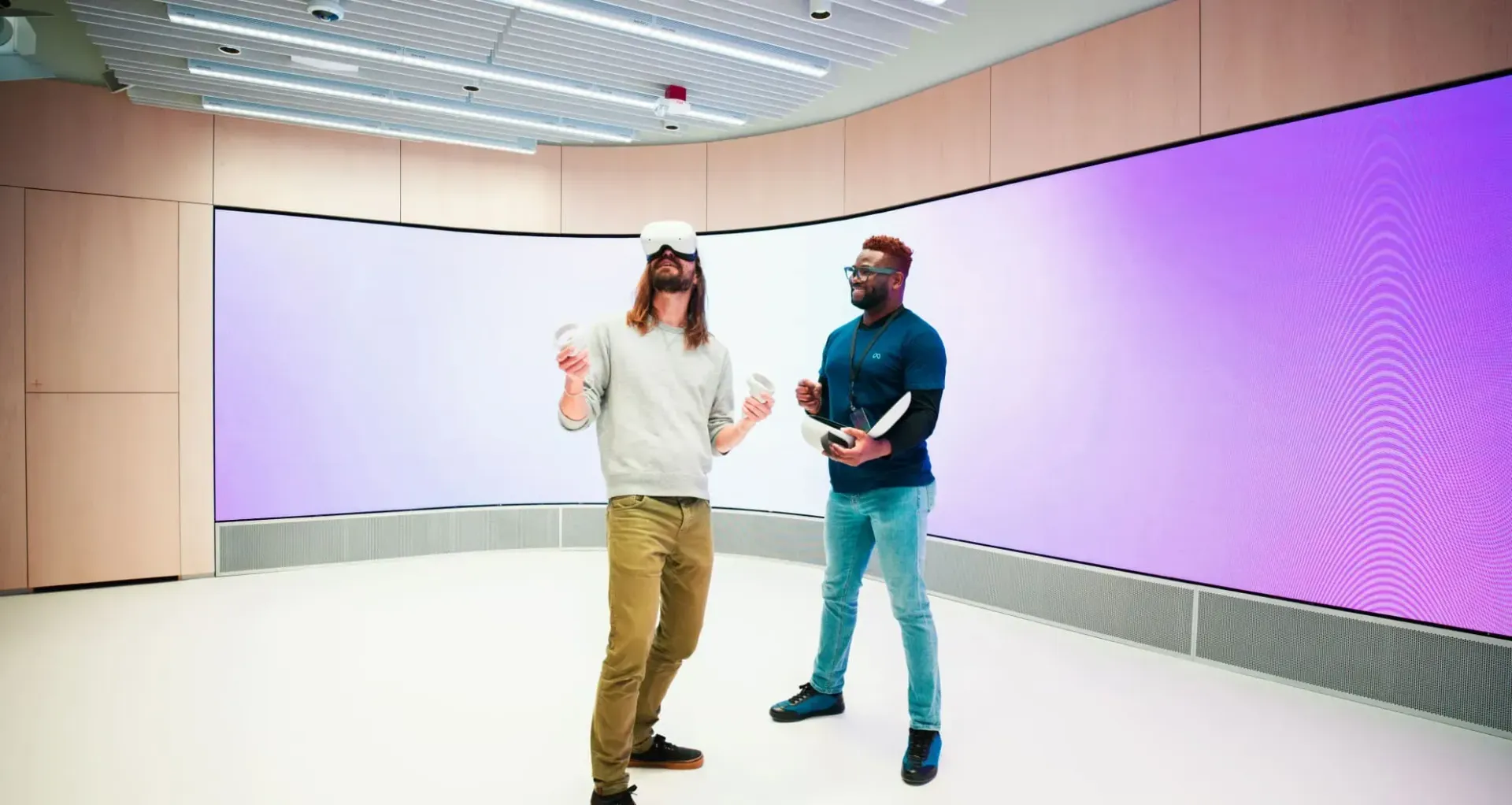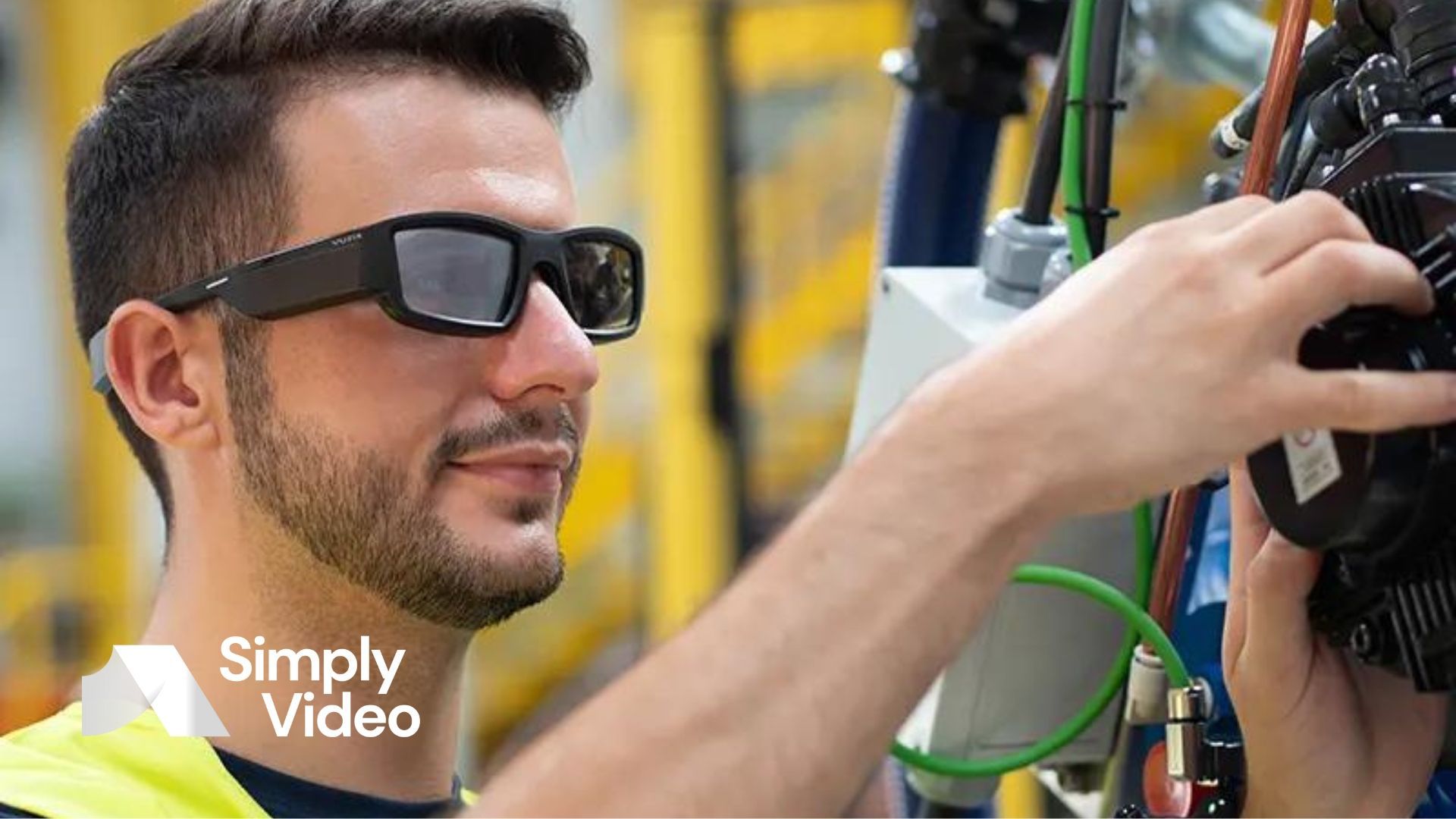How to scale XR: an enterprise guide
There are literal guidebooks for scaling clouds, teams and marketing strategies. But what about extended reality (XR)? Plot out a roadmap with our guide.

"Scalability" is to an enterprise what "being cold" is to a refrigerator.
Without the means to generate cool air, a refrigerator is just a cupboard. And without the capacity to scale, an enterprise is like a steam train without wheels. It eats coal and pumps out smoke, but it doesn't go anywhere.
Cresco ergo adsequor. I scale therefore I succeed.
Thankfully, there are rules – written and unwritten – that tell us how to scale most technologies, services and business functions. We know how to scale teams because HR departments have been doing it for decades. And we can scale cloud solutions because they have scalability built in. They're designed, from the ground up, to grow when we grow.
But what about extended reality (XR) devices? Smart glasses, virtual reality (VR) headsets and augmented reality (AR) goggles have been around for years now. But in the grand timeline of enterprise technologies, they're as fresh as daisies. To many companies, they feel like uncharted territory. Nobody has, as yet, written a definitive guide to scaling enterprise XR.
Don't let that put you off. Sure, there's no hard-and-fast rulebook – but if we follow a few rules of thumb and use a little common sense, that uncharted territory starts to look very much like a roadmap.
Want to deploy – and
scale
– an XR strategy? Start here.
1. Define success – and measure it
Any project, whether it's a product launch or a Christmas party, should begin with this question: "What does success look like?"
Your XR strategy is no different. Start by asking yourself, "Why do I want to use XR?" and "What real-world benefits am I hoping to see?"
If you're using XR for remote assistance, you might hope to reduce travel costs or boost first-time fixes. If you're using it for training, you're probably hoping to improve the efficiency of that training or reduce your reliance on expensive physical resources. And so on.
Now focus on those benefits. Choose one or two – and keep them simple and measurable. They're the yardsticks by which you'll measure the success of your XR strategy.
After a few weeks or months of XR usage, has training efficiency improved? Are travel costs down? Are engineers making fewer errors? If so, you'll know things are working – and you'll have the evidence you need to scale up your strategy.
2. Choose the right devices
Resources can scale. But you can't "scale" hardware any more than you can turn a pumpkin into a stagecoach.
Sure, software updates can add new features – but only to a point. That high-tech new toaster is never going to learn to wash your dishes.
What you
can
do is buy with scalability in mind. If you know your XR strategy is likely to broaden in scope, you could select hardware that's more capable than you need it to be.
Let's say, for instance, that your short-term focus is on using XR for remote assistance. But you know that, later on, you're likely to need advanced AR features.
Do you go for an affordable set of ruggedised smart glasses (they'll handle remote assistance just fine) or plan ahead and buy a top-of-the-line AR device like the
Magic Leap 2?
It's a tricky balancing act. If you do need more features later on, playing it safe with low-cost devices might end up being a false economy. But the other side of the coin is just as bad – you could end up maintaining a fleet of powerful devices, but only using 10% of their potential.
As ever, planning is key. Do your research, map out your plan of action and perhaps start with a small-scale trial to get a feel for how XR works in your workplace.
3. Assess your technological infrastructure
You know
why
you're investing in XR. Now it's time to assess whether your current tech can support that goal.
Ask yourself, "Do I have the right infrastructure in place to get where I need to go?" and "Will further investments be required as the strategy scales?"
If you rush in without making the right preparations, you might be stung by unexpected costs or – worse – downtime.
There's a lot to think about. Connectivity, for instance. How's your WiFi signal coverage? Do you need to invest in signal boosters? Or – if you're using the hardware outdoors – portable WiFi hotspots?
Are you planning to use VR or AR? If so, do you have areas set aside where the technology can be used safely and effectively?
And don't forget training. Your new XR headsets aren't much use if your staff can't use them properly.
Save the surprises for your birthday. Get your infrastructure sorted now and you'll have less to worry about as your strategy grows in scope.
4. Consider upkeep and maintenance
Scalability and longevity go hand in hand.
You're in it for the long haul – so you should make sure that your hardware goes the distance too.
This means cleaning it, maintaining it and installing regular software updates – as well as allocating responsibility for these tasks so they don't get lost down the back of the proverbial sofa.
Luckily for you, we've written a
guide to looking after XR headsets.
5. Invest in scalable software
Let's say you've bought a shiny new Windows PC. You can't do much with it until you invest in some decent apps – unless you're happy to browse the web and play Solitaire forever.
Without software, a PC is a boxful of wasted potential. The same goes for XR hardware.
But what software should you choose? It needs to support the use case you have in mind, of course – whether that's remote assistance, training or data capture. It needs to be simple and intuitive, so you can quickly onboard new users. And, like any good enterprise app, it needs to scale.
This is where SimplyVideo can help. Our video collaboration platform is as easy to use as any popular videoconferencing app – and it comes with a suite of XR-enhanced features to help you unlock the true potential of your headsets.
This includes in-call annotation, for total clarity of communication between frontline workers and remote experts. And 3D asset visualisation, which allows product engineers and collaborators to inspect and manipulate CAD objects in XR space.
And, most importantly, it has scalability built-in.
SimplyVideo is a cloud-based app. It's delivered from the cloud with no need for clunky, hard-to-manage on-premise installations. It grows when you grow. All you have to worry about is putting its potential to good use.
What's more, SimplyVideo works with
all
of the most popular XR headsets and integrates with a roll-call of enterprise apps, including Zoom, Microsoft Teams, Pexip and Quickchannel.
This means it's easy to deploy SimplyVideo into your existing app ecosystem – and you'll face minimum disruption if you decide to shake things up in future.
SimplyVideo is a
video collaboration platform designed for PCs, smartphones and XR devices.
Learn how it can improve productivity and bolster problem-solving – or
sign up now for a 30-day free trial.












